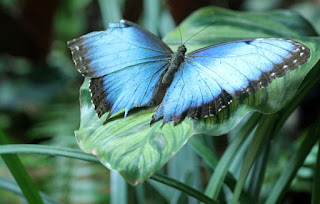I like getting out of bed in the morning. Most days, I look
forward to what I have planned—I always have plenty to do, but I enjoy most of
it. I’m currently healthy and facing no immediate emergencies, nor am I working
my way through any crises.
Knock wood.
I was almost afraid to write the words above because I’m
just superstitious enough not to want to jinx things. I also don’t want to brag
or portray my life or my self as being without flaws—both of those things are
untrue, obviously. But right here, right now, things are awfully good. I can
complain, whine, and worry with the best of them, but can I actually be…happy?
While it’s true that there is much to be upset and unhappy
about in the world, there is also much to be happy and grateful for. I’m not
always able to enjoy the happy—indeed, I often feel guilty or nervous about
doing so—but I want to get over that. I
don’t want to miss or overlook my own happiness! So I’ve been thinking about
how to relax and enjoy it when things are going well in my life. If you’re lucky
enough to find yourself in a happy place like I am right now, here are some tips to help you “do” happy:
First, be grateful. Don’t take the happy times for granted.
Pause at the beginning or end of the day to ponder what’s going right, or even
better, write down the things you are grateful for. (Research has demonstrated that this practice improves happiness and well being.)
Savor the happy. Notice and enjoy what’s good, happy, and
right about your life. This is where I stumble—unbelievably, I think I’m afraid
to be happy! (I’m afraid if I feel too happy, it might get taken away.) Yes, it’s inevitable that happy times pass, just as unhappy ones do. How sad if
you miss out on fully enjoying your own happiness because you’re afraid you
might lose it.
Prepare for bad times. Perhaps you could tuck away some money to use for things that will help you ease through difficult times, like a massage, a few
extra take out meals, and so on. Go ahead and keep that gratitude journal so
when things are hard you can look back at written proof of happier times. Stock
a comfort drawer. Think about the things that are making you happy and take
steps to keep them going as long as possible.
Share your good fortune. This doesn’t mean rubbing your
happiness in others’ faces, but providing support and encouragement to them
while you have the mental and emotional resources to do so. Look around—is there
someone who is currently going through a hard time whom you can comfort?
Perhaps you can write a note to someone you care about expressing your feelings
for them. Happiness is contagious—why not spread it around?
As strange as it sounds, “doing” happy doesn’t always come
easy. I hope these tips will help you enjoy the happy times when they come, and
that there are many happy times in your future to enjoy.
How do you “do” happy?













































